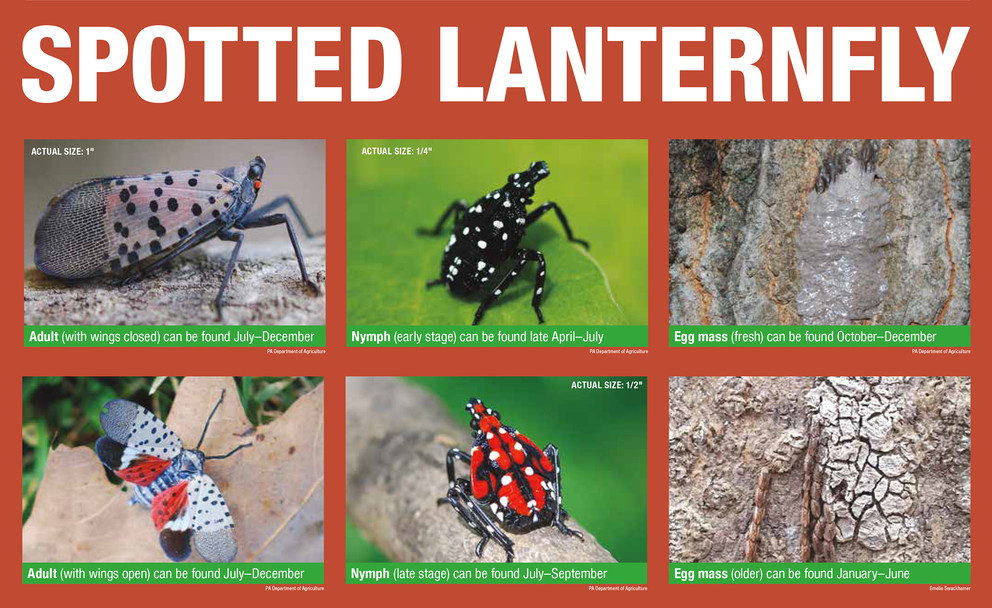Spotted Lanternfly
You have likely heard that the Spotted Lanternfly is the latest invasive insect pest that threatens our natural habitats, managed landscapes, and farms and forests.
This is potentially the worst invasive pest since the introduction of the gypsy moth nearly 150 years ago.
This Asian planthopper was found for the first time in the United States in Berks County, Pennsylvania, in 2014. It has since spread throughout 13 counties in southeastern Pennsylvania, currently under quarantine, including Chester County. The insect has recently been found in New Jersey and Virginia.
This insect threatens not only about $18 billion of agricultural products in Pennsylvania, but it can make outdoor areas unusable by excreting a sticky substance called honeydew, which serves as a host for sooty mold. Furthermore, the presence of Spotted Lanternfly could threaten the shipment of goods over state lines and from the port of Philadelphia, should restrictions be placed on the movement of Pennsylvania products.
Since it is new to the United States, little is known about its behavior and biology, but researchers in the Penn State College of Agricultural Sciences and United States Department of Agriculture (USDA) are working tirelessly to gather scientific data on how to contain and manage this pest. The Pennsylvania Department of Agriculture (PDA) and USDA are leading the strategy and implementation of containment and control efforts, while the college focuses on research, education, and outreach.
Working with PDA and USDA, Penn State Extension has launched a spotted lanternfly website that serves as the primary hub for the most up to date information on this insect. To help stop the spread, the public can visit this website to learn how to identify spotted lanternfly and to report any potential sightings for action by PDA.
You will also find an online course that provides businesses with the necessary training to receive a PDA permit that is required for companies operating in the quarantine zone to move equipment and goods within and out of the zone.
We need your help in fighting this pest as September through December is their egg laying season.
Please help us spread the word by pasting the below spotted lanternfly image on your web sites and hyperlink it to the Spotted Lanternfly website.

Spotted Lanternfly (SLF) is an invasive insect present in Chester County and surrounding areas. SLF threatens agriculture, tree health and it is a nuisance pest. Chester County is within the SLF quarantine zone. Check for and remove SLF egg masses from late fall to early spring. Remember that egg masses may be underneath your car or in your wheel well. During all other times of the year, check for nymphs and adults, and keep your windows rolled up when you park. Don’t store things or park under infested trees, and do not transport firewood. Inspect your vehicle for SLF before traveling.
For more information and to learn how you can control SLF on your own property, visit this website or call 1-888-4BAD-FLY.
